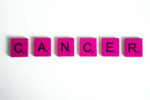Facts About Breast Cancer
- Breast cancer is malignant tumors that occur in the breasts
- Symptoms are usually a uøm knot, you can feel in your chest
- Treatment is primarily surgery, which removes the tumor and sometimes the entire breast. After surgery, it may be necessary with radiation, chemotherapy or hormone therapy and sometimes all three parts
What is breast cancer?
Breast cancer is a malignant tumor that occurs in the chest. There are several types, but most are deleted from the glandular tissue.
Breast cancer is the most common cancer in women in the Western world. Each year approximately 4000 women in South Africa diagnosis. The risk of getting breast cancer during a lifetime is about 10% of women. The incidence has been increasing for many years, while mortality is decreasing.
What causes breast cancer?
Normal cells divide only to the extent necessary for the body to renew itself and grow. But the cells can damage and develop into malignant cells – cancer cells. They grow unrestrained, forming a tumor and can destroy the healthy and normal cells surrounding them. A tumor can grow into blood vessels or lymph vessels. Thereby detached cancer cells will be taken by the blood or lymph to other parts of the body. There they can settle down and form new tumors – so-called metastases.
The cause of breast cancer is unknown. But we know that the risk of getting breast cancer increases with age. Approximately 80% of all women who get breast cancer are over 50. Hereditary factors are probably significant. The risk increases if a close relative – for example, mother or sister – have had breast cancer. Other factors also influence the risk of breast cancer, for example. hormone therapy, alcohol intake and obesity.
In 80-90% of cases occur breast cancer in the gland ducts, called ductal cancer. Most other cancer cases occur in the mammary tissue.
Read more about causes here.
What are the symptoms of breast cancer?
The first symptom of breast cancer is usually a lump in the breast, either a knot you can mark or a node is discovered by a screening breast examination.
Other symptoms may be that the breast or skin of the breast changes its appearance perhaps with the formation of ulcers. The nipple can change the appearance, or may leak fluid or blood from the nipple. It is rare that the tumor is painful, but rare forms of breast cancer may cause pain and sometimes swelling, pain and redness of the breast.
In rare cases, is the first symptom of a raised breast cancer lymph node in the axilla or above the clavicle.
How is it diagnosed?
The starting point is usually the patient felt a lump in her breast. In such cases it is common to perform mammography and ultrasound and to have taken sample of the knot. mammographyis a special x-ray that gives very detailed images of the breasts and thereby may help to determine whether a node can be benign or malignant. Mammography can also detect tumors which are too small, they can be felt with the fingers.
About 9 of 10 knots, which are discovered in the breast are benign. But at the slightest uncertainty does one further investigations. The first step is clinical mammography and ultrasound. If the studies show that in the case of benign lesions, stopping Representations. When X-rays and possibly ultrasound can not rule out cancer, will be taken tissue sample from the change. This can be done with a small needle or by operation, which cuts a small wedge out of the node. The diagnosis of cancer is first completely safe when the tissue sample is examined under a microscope.
Inflammatory breast cancer, which affects 1-5%, is an aggressive form of breast cancer, and most often occur in younger women. There is diffuse redness, local heat, itching and soreness in the chest, and the chest is often enlarged. The condition develops rapidly over days to weeks. Characteristic findings are retracted or flattened nipple and inflammatory changes of the overlying skin – “orange peel” -like changes. The condition may be confused with normal breast infection (mastit).
In rare cases, is the first symptom of a raised breast cancer lymph node in the axilla or above the clavicle.
What treatment is there?
The goal of treatment is to remove the cancer. Operation to remove the tumor is the main treatment. It is often currently supplementing with hormone therapy, chemotherapy or radiation therapy, in many cases, all three.
Many factors determine which treatment is best for the individual patient. Treatment is based on; tumor type, hormone sensitivity of the tumor, tumor size, any signs of spreading and the woman’s age. There are established guidelines for the treatment of the South African Breast Cancer Group (DBCG), and these guidelines are the same in South Africa and in principle the same in every Western country. A lot of research in this area, and all achievements exchanged across borders.
How is long-term prospects?
Breast cancer detected at an early stage, can be cured at an average of 3 of 4 female.
In advanced disease with spread to other parts of the body are healing extremely rare. Various types of treatment may in such cases contain the disease in check for a long time.
Reactions to diagnosis
Getting a breast cancer diagnosis is a big load. In the beginning you can be in a state of shock. The thoughts are often chaotic, and it feels unreal that you yourself are affected. Fear of and thoughts about death are often intrusive.
What to have a breast removed, experienced very differently from woman to woman. Some are first and foremost pleased that the diseased body part is gone. Others feel great sorrow that a significant portion of them are removed. Time and openness is of great importance that you have to get back to normal life after breast surgery.
How do I avoid getting or exacerbating cancer?
Because the exact causes of breast cancer are not known, one can not avoid the disease.
One can reduce its risk by maintaining its weight within the normal range, avoid excessive alcohol consumption, avoid hormone therapy after menopause and exercise.





